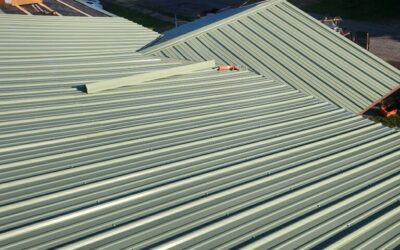Why Is My Roof Leaking After Heavy Rain? Causes, Risks & Solutions
Discovering a roof leak after a heavy downpour can be alarming. This comprehensive guide delves into the common causes of roof leaks during heavy rain, the associated risks, and effective solutions to protect your home.
Understanding Roof Leaks During Heavy Rain
Heavy rainfall can expose vulnerabilities in your roofing system. While roofs are designed to withstand various weather conditions, certain factors can compromise their integrity, leading to leaks. Identifying these issues promptly is crucial to prevent extensive damage.
Common Causes of Roof Leaks in Heavy Rain
1. Damaged or Missing Shingles
Shingles serve as the first line of defense against rain. Over time, they can crack, curl, or become dislodged due to weather exposure. Damaged or missing shingles allow water to penetrate the underlying layers, leading to leaks.
2. Clogged Gutters and Downspouts
Gutters and downspouts channel rainwater away from the roof. When clogged with debris, water can back up, seep under shingles, and cause leaks. Regular cleaning and maintenance are essential.
3. Faulty Flashing
Flashing seals the joints and edges of roof features like chimneys and vents. If flashing is improperly installed, corroded, or damaged, it can allow water to seep in.
4. Cracked Vent Booting
Vent boots seal the area around roof vents. Over time, the rubber can crack or deteriorate, allowing water to enter the roof structure.
5. Improperly Sealed Valleys
Roof valleys, where two slopes meet, handle significant water runoff. If not properly sealed, water can penetrate the roof at these junctions.
6. Skylight Leaks
Skylights can leak if not properly installed or if the seals have deteriorated. Water can seep around the edges during heavy rain.
7. Condensation Issues
Poor attic ventilation can lead to condensation, which may mimic a roof leak. This moisture can accumulate and drip onto ceilings.
8. Structural Damage
Storms, falling branches, or aging can cause structural damage to the roof, creating entry points for water. (
Risks of Ignoring Roof Leaks
Unaddressed roof leaks can lead to:
- Structural Damage: Persistent moisture can weaken the roof structure and interior ceilings.
- Mold and Mildew: Damp conditions promote mold growth, posing health risks.
- Increased Repair Costs: Delays in addressing leaks can escalate repair expenses.
Preventative Measures
To minimize the risk of roof leaks during heavy rain:
- Regular Inspections: Schedule annual roof assessments to identify and address vulnerabilities.
- Gutter Maintenance: Keep gutters clean to ensure proper water drainage.
- Attic Ventilation: Ensure adequate insulation and ventilation to prevent condensation.
- Prompt Repairs: Address damaged shingles or flashing immediately to prevent water ingress.
Seeking Professional Assistance
If you notice signs of a roof leak after heavy rain, consult a roofing professional to assess and remedy the issue promptly. Professionals can accurately identify the source of the leak and recommend appropriate solutions to prevent further damage.
Note: This overview provides general information. For comprehensive guidance tailored to your specific situation, consider consulting a roofing expert.
 (440) 307-2060
(440) 307-2060

